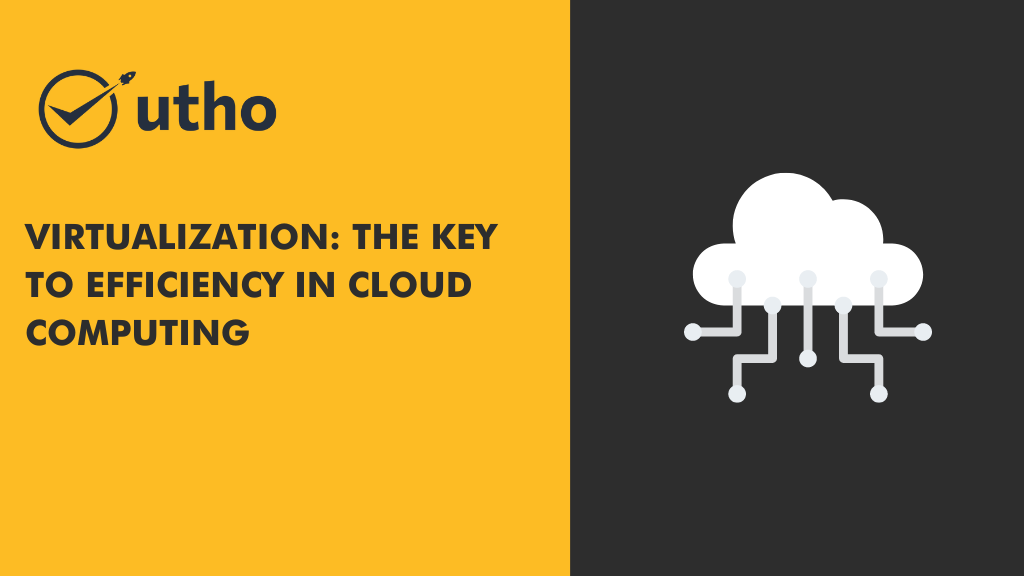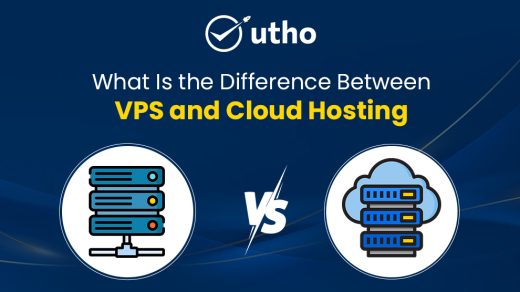In today's world of cloud computing, virtualization is a game-changer. It's all about making the most of your resources by turning one physical machine into many virtual ones. This helps businesses save money, scale up easily, and run more efficiently. Let's dive into how virtualization makes cloud computing work better for everyone.
How does virtualization contribute to the efficiency of cloud computing systems?
Virtualization plays a crucial role in enhancing the efficiency of cloud computing systems by enabling the creation of virtual instances of computing resources such as servers, storage, and networking components. Here's how virtualization contributes to this efficiency:
Resource Utilization: Virtualization allows for the efficient utilization of physical hardware resources by dividing them into multiple virtual machines (VMs) or containers. This means that a single physical server can host multiple virtual servers, optimizing resource allocation and reducing hardware underutilization.
Scalability: With virtualization, cloud computing systems can quickly scale resources up or down based on demand. Virtual machines and containers can be provisioned or decommissioned dynamically, allowing for rapid response to changing workloads and ensuring optimal resource allocation.
Isolation: Virtualization provides isolation between different virtual instances, ensuring that each application or workload operates independently without interfering with others. This isolation enhances security and stability within the cloud environment by minimizing the impact of failures or security breaches.
Flexibility: Virtualization enables flexibility in deploying and managing diverse workloads within the cloud environment. Users can deploy various operating systems and applications on virtual machines or containers, adapting to specific requirements without constraints imposed by physical hardware limitations.
Resource Consolidation: Virtualization facilitates resource consolidation by enabling multiple virtual instances to share underlying physical resources. This consolidation reduces the number of physical servers required, leading to cost savings in terms of hardware procurement, maintenance, and energy consumption.
Virtualization enhances the efficiency of cloud computing systems by optimizing resource utilization, enabling scalability, providing isolation between virtual instances, offering flexibility in workload deployment, and facilitating resource consolidation. These benefits contribute to improved performance, agility, and cost-effectiveness in cloud environments.
How does virtualization help in reducing hardware costs and improving cost-effectiveness in cloud computing?
Virtualization helps in reducing hardware costs and improving cost-effectiveness in cloud computing in several ways:
Consolidation of Resources: Virtualization allows multiple virtual machines (VMs) to run on a single physical server, consolidating resources such as CPU, memory, storage, and network interfaces. This consolidation reduces the number of physical servers required, leading to savings in hardware costs.
Optimized Resource Utilization: By dividing physical servers into multiple VMs, virtualization optimizes resource utilization. It ensures that resources are allocated dynamically based on workload demands, reducing underutilization and maximizing the efficiency of hardware resources.
Energy Efficiency: Virtualization contributes to energy efficiency by reducing the number of physical servers needed to support workloads. Consolidating resources onto fewer servers results in lower energy consumption, leading to cost savings on power and cooling expenses.
Reduced Maintenance Costs: With fewer physical servers to manage, organizations can reduce maintenance costs associated with hardware procurement, installation, maintenance, and upgrades. Virtualization simplifies IT management tasks, allowing administrators to focus on higher-level activities.
Extended Hardware Lifespan: Virtualization prolongs the life of hardware components by making sure they're used to their fullest extent. Instead of replacing hardware as frequently, organizations can leverage virtualization to prolong the lifespan of existing infrastructure, further reducing costs.
Overall, virtualization significantly contributes to cost reduction and improved cost-effectiveness in cloud computing by enabling resource consolidation, optimizing resource utilization, enhancing energy efficiency, reducing maintenance costs, and extending hardware lifespan. These benefits make virtualization a key technology for driving efficiency and cost savings in modern cloud environments.
What are some common virtualization techniques used in cloud environments, and how do they optimize efficiency?
In cloud environments, several common virtualization techniques are employed to optimize efficiency:
Hardware Virtualization: This technique involves creating virtual instances of physical hardware components, such as CPUs, memory, and storage devices. It allows several virtual machines (VMs) to operate on just one physical server, making the most of resources and cutting down hardware expenses.
Hypervisor-Based Virtualization: Also known as full virtualization, this technique utilizes a hypervisor to abstract and manage physical hardware resources. The hypervisor acts as a virtualization layer between the physical hardware and the VMs, allowing multiple operating systems to run concurrently on the same physical server.
Containerization: Containerization is a lightweight virtualization technique that encapsulates applications and their dependencies into self-contained units called containers. Containers share the host operating system's kernel and resources, making them more efficient and faster to deploy compared to traditional VMs. Containerization optimizes efficiency by reducing overhead and enabling rapid application deployment and scalability.
Para-Virtualization: In para-virtualization, guest operating systems are adjusted to recognize the virtualization layer. This allows the guest OS to communicate directly with the hypervisor, improving performance and efficiency compared to full virtualization techniques.
Hardware-Assisted Virtualization: Hardware-assisted virtualization leverages specialized hardware features, such as Intel VT-x or AMD-V, to improve virtualization performance and efficiency. These features offload virtualization tasks from the CPU, reducing overhead and improving overall system performance.
Network Virtualization: Network virtualization abstracts network resources, such as switches, routers, and firewalls, to create virtual networks within a physical network infrastructure. This technique enables the creation of isolated virtual networks, improving security, scalability, and flexibility in cloud environments.
Storage Virtualization: Storage virtualization abstracts physical storage resources to create logical storage pools that can be dynamically allocated to different applications and users. This technique improves storage efficiency, scalability, and flexibility by centralizing management and simplifying data migration and provisioning.
These virtualization techniques optimize efficiency in cloud environments by enabling better resource utilization, reducing hardware costs, improving scalability and flexibility, enhancing performance, and simplifying management and deployment processes. By leveraging these techniques, organizations can maximize the benefits of cloud computing while minimizing costs and complexity.
What security considerations are associated with virtualization in cloud computing, and how are they addressed?
Security considerations associated with virtualization in cloud computing include:
Hypervisor Security: The hypervisor, which manages virtual machines (VMs) on physical servers, is a critical component of virtualization. Vulnerabilities in the hypervisor could potentially lead to unauthorized access or control over VMs. To address this, organizations implement stringent access controls, regularly patch and update hypervisor software, and utilize secure hypervisor configurations.
VM Isolation: Ensuring strong isolation between virtual machines is crucial to prevent unauthorized access and data breaches. Hypervisor-based security features, such as VM segmentation and access controls, are employed to enforce isolation and prevent VM-to-VM attacks.
VM Sprawl: VM sprawl occurs when a large number of unused or unnecessary virtual machines are created, increasing the attack surface and management overhead. To mitigate this risk, organizations implement policies for VM lifecycle management, regularly audit and decommission unused VMs, and employ automation tools for VM provisioning and deprovisioning.
Resource Segregation: In multi-tenant cloud environments, ensuring segregation of resources between different users or tenants is essential to prevent unauthorized access to sensitive data. Techniques such as network segmentation, VLANs, and virtual firewalls are used to enforce resource segregation and isolate tenant environments.
Data Protection: Protecting data within virtualized environments is critical to maintaining confidentiality, integrity, and availability. Encryption of data at rest and in transit, strong access controls, and regular data backups are essential measures to mitigate data security risks in virtualized cloud environments.
Vulnerability Management: Regular vulnerability assessments and patch management are essential to address security vulnerabilities in virtualized environments. Organizations deploy security patches and updates promptly, conduct regular vulnerability scans, and implement security best practices to reduce the risk of exploitation.
Virtualization Management Interfaces: Secure management of virtualization platforms and tools is essential to prevent unauthorized access and control over virtualized resources. Strong authentication mechanisms, role-based access controls (RBAC), and auditing capabilities are employed to secure management interfaces and monitor for unauthorized activities.
Compliance and Regulatory Requirements: Compliance with industry regulations and data protection laws is critical in virtualized cloud environments. Organizations ensure adherence to regulatory requirements by implementing security controls, conducting regular compliance audits, and maintaining documentation of security measures and controls.
By addressing these security considerations through a combination of technical controls, best practices, and proactive risk management strategies, organizations can enhance the security posture of their virtualized cloud environments and mitigate potential security risks and threats.
How does Utho Cloud contribute to enhancing scalability and flexibility in the cloud through virtualization?
Utho Cloud enhances scalability and flexibility in the cloud through virtualization in several ways:
Elastic Compute: Utho Cloud offers a range of compute options, including virtual machines (VMs) and bare metal instances, that can be quickly provisioned and scaled up or down based on demand. This elasticity allows organizations to dynamically adjust their compute resources to meet changing workload requirements, optimizing performance and cost-effectiveness.
Automated Scaling: Utho Cloud provides automated scaling capabilities that allow users to define scaling policies based on predefined triggers, such as CPU utilization or incoming traffic. This automated scaling ensures that resources are allocated efficiently, minimizing manual intervention and maximizing uptime and availability.
Virtual Networking: Utho Cloud's virtual networking features enable organizations to create and manage virtual networks, subnets, and security groups to isolate and secure their cloud resources. This flexibility allows users to design custom network architectures that meet their specific requirements, optimizing performance and security in the cloud environment.
Storage Flexibility: Utho Cloud offers a variety of storage options, including block storage, object storage, and file storage, that can be easily provisioned and scaled to accommodate changing storage needs. Users can leverage these flexible storage solutions to store and manage data effectively, ensuring scalability and performance in the cloud.
Integrated Services: Utho Cloud provides a comprehensive suite of integrated services, including database, analytics, and application development tools, that can be seamlessly integrated with virtualized infrastructure. This integration simplifies the deployment and management of cloud applications, enabling organizations to innovate faster and drive business growth.
Overall, Utho Cloud's robust virtualization capabilities empower organizations to scale their infrastructure dynamically, adapt to changing business requirements, and achieve greater agility and efficiency in the cloud. By leveraging virtualization technology, Utho Cloud enables organizations to maximize the benefits of cloud computing while minimizing complexity and cost.
Virtualization is the backbone of efficiency in cloud computing. It helps businesses use resources better, scale up easily, and save money. As technology evolves, virtualization will continue to play a vital role in making cloud computing even more effective and innovative for everyone.




